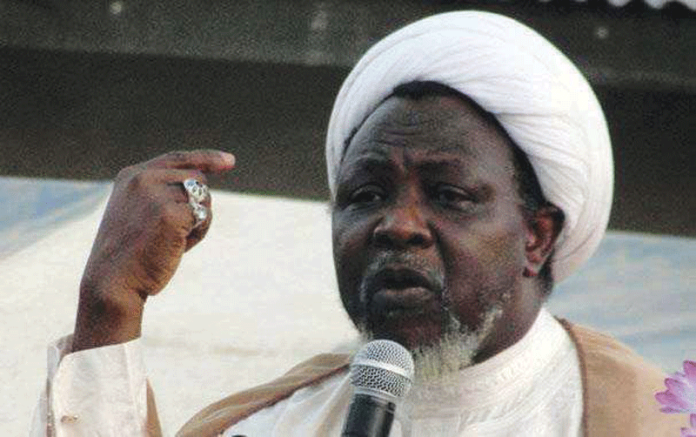By Ishaya Ibrahim
Acting News Editor
Clashes between Shia Muslims and the Nigerian military have been recurring.
At least 33 Shia were gunned down by soldiers in Zaria during an encounter in 2014. Both sides gave contradictory accounts of the bloodshed. One fact remains certain, however – Shia provoked, the military opened fire.
Dozens died in a suicide attack on a Shia procession walking from Kano to Zaria on November 28, 2015. Boko Haram was initially blamed, but a Shia spokesperson later claimed that the attack was masterminded by the military.
Contradictory claims
On December 12, about two weeks after the suicide attack, hundreds of Shia were gunned down by the Army.
Contradictory claims were made by both sides. But video footage shows stick-clutching Shia militia barricading the convoy of the Chief of Army Staff, General Tukur Buratai.
In the clip, desperate Army officers were seen negotiating with the Shia to clear the road. They rebuffed all entreaties, chanting Allah Akbar (God is great) to the frustration of the soldiers. The video ended.
What followed was apparently not captured by video. The Shia members claimed hundreds of their colleagues were killed in the road-clearing operation.
A unit of soldiers reportedly destroyed two Shia shrines in Zaria, killing its occupants and beating up their leader, Ibrahim Al-Zakzaky, to stupor.
At the end of the exercise, the Shia claimed that more than 1,000 of their members were killed; which led to a global outrage.
Beware of another Boko Haram
A retired major who pleaded anonymity said: “This is how Boko Haram started; the extra judicial killing of Mohammed Yusuf, leader of the sect, and clamping down on other members.
“I see the military making the same error – dispersing Shia rebels with lethal bullets, rather than use rubber bullets, teargas, and hot water canon which is suitably for such operation, and then beating beyond recognition the leader of the sect, Ibrahim Al-Zakzaky.
“We need to pray that the man does not die, else you have another terrorist outfit in the mould of Boko Haram.”
A security consultant, Ayodele Olorunfemi, wondered why the military could not limit its attack on the mob that barricaded the road, but went to Shia shrines, including the home of Al-Zakzaky, to vent its anger.
“That is callous. I expect the chief of army staff to resign. Would his counterpart in the United States allow such a carnage because they made an attempt on his life?
“Look, the life of every high ranking security chief is at risk anywhere in the world. It remains the duty of his entourage to protect him from such threat without incurring such collateral damage,” he said.
History of Shia, and difference with Sunni Islam
(Culled from The Economist)
Clashes between Islam’s two big sects, the Sunni and the Shia, take place across the Muslim world.
In the Middle East a potent mix of religion and politics has sharpened the divide between Iran’s Shia government and the Gulf States, which have Sunni governments.
Last year a report by the Pew Research Centre, a think tank, found 40 per cent of Sunnis do not consider Shia to be proper Muslims. So what exactly divides Sunni and Shia Islam and how deep does the rift go?
The argument dates back to the death in AD 632 of Islam’s founder, Muhammad. Tribal Arabs who followed him were split over who should inherit what was both a political and a religious office.
The majority, who would go on to become known as the Sunnis, and today make up 80 per cent of Muslims, backed Abu Bakr, a friend of Muhammad and father of his wife Aisha.
Others thought Muhammad’s kin the rightful successors. They claimed he had anointed Ali, his cousin and son-in-law – they became known as the Shia, a contraction of “shiaat Ali”, the partisans of Ali.
Abu Bakr’s backers won out, though Ali did briefly rule as the fourth caliph, the title given to Muhammad’s successors.
Islam’s split was cemented when Ali’s son Hussein was killed in AD 680 in Karbala (modern Iraq) by the ruling Sunni caliph’s troops.
Sunni rulers continued to monopolise political power, while the Shia lived in the shadow of the state, looking instead to their imams, the first 12 of whom were descended directly from Ali, for guidance.
As time went on the religious beliefs of the two groups started to diverge.
Today the world’s 1.6 billion Muslims all agree that Allah is the only God and Muhammad his messenger. They follow the five ritualistic pillars of Islam, including Ramadan, the month of fasting, and share the Koran.
But while Sunnis rely heavily on the practice of Muhammad and his teachings (the “sunna”), the Shia see their ayatollahs as reflections of God on earth.
This has led Sunnis to accuse Shia of heresy, while Shia point out that Sunni dogmatism has led to extremist sects such as the puritanical Wahhabis.
Most Shia sects place importance on the belief that the 12th and final imam is hidden (called “in occultation”) and will reappear one day to fulfill divine will.
Meanwhile, their sense of marginalisation and oppression has led to mourning ceremonies such as ashura, when followers flagellate themselves to commemorate Hussein’s death at Karbala.
There has never been a clash between the Shia and Sunni on the scale of the Thirty Years War, which saw Christian sects fight each other in 17th-century Europe with great loss of life.
This is partly because the Shias, ever mindful of their minority status, retreated. The lines that divide Muslims in the Middle East today are being drawn by politics as much as by religion.
The “Shia Crescent” that runs from Iran, through Assad’s regime in Damascus to Hizbullah in Lebanon was once praised by Sunni figures.
But the revolutions in the region have pitted Shia governments against Sunni Gulf states such as Saudi Arabia and Qatar, who have supported their co-religionists with cash.
This is strengthening Sunni assertiveness and making the Shia feel more threatened than usual.
In most cases, though, members of the two sects still live harmoniously together.













